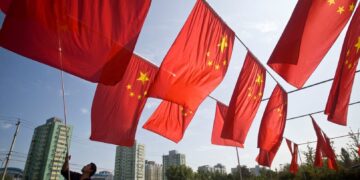Troubled times
We’ve heard the stories from China: a visiting foreign executive illegally confined to a hotel room; a plant manager locked inside his own factory; rogue suppliers or distributors from some far corner of the country arriving to protest and surround offices in Beijing or Shanghai; or hundreds of striking employees shutting down a factory for weeks. When a multinational company (MNC) is faced with tough restructuring, how can it avoid headlines in the papers and red lines on the balance sheet?
MNCs are now faced with a particularly stressful situation. As China’s economy is starting to slow, foreign companies are reassessing their footprint in China – and many have realized they no longer need the facilities, people, or partners they had. However, MNCs are finding that the broader regulatory climate and the psychology of laborers are shifting, making it difficult to safely restructure operations and prevent a labor or commercial disputes.
What’s changed for companies?
Cost burdens are undeniably rising. In the 2014 European Chamber Confidence Survey, increasing labor cost was the primary human resources concern. In the 2015 AmCham Shanghai survey, many indicated that the rising costs of operations in China were a “serious hindrance to business.”
Foreign businesses are not leaving China—only 6 percent of corporate respondents to the AmCham survey planned to move out of the country. However, foreign companies are choosing to make labor force adjustments, which affect employees, third-party suppliers, and distributors.
More than 30 percent of companies surveyed by AmCham have either begun, or plan to begin, downsizing while acquiring automated technology. This trend was also noted in the European Chamber Confidence Survey, in which 53 out of 114 European companies planning to cut costs intended to do so through a reduction in personnel.
Discontent in the numbers
The China Labour Bulletin (CLB), a Hong Kong-based labor rights organization, recorded 569 labor incidents across China in the fourth quarter of 2014, a threefold increase in the number of protests over the same period in 2013. Although Guangdong province remains particularly vulnerable to labor unrest, other locations such as Shandong, Jiangsu, and Shanghai are also prone.
From March 2014 through February 2015, the CLB recorded 130 incidents across China that occurred against foreign-owned or joint venture entities, which were mainly manufacturers. Of these, the vast majority involved large numbers of workers demanding wage increases, new benefits, or compensation for restructuring, overtime, and layoffs.
What’s motivating workers to act more aggressively?
This dramatic uptick in incidents can be attributed, in part, to three larger forces at play: a “new normal” of economic, regulatory, and technological factors which shifts initiative to the workers.
- The economic and regulatory climate Chinese workers are aware that the wider manufacturing slowdown will mean finding a job will be more difficult. Simultaneously, China’s labor laws place significant power into the hands of workers. China’s Ministry of Human Resources is recommending provisions that would limit companies’ ability to make large-scale personnel adjustments.
- Voicing grievances Workers have become increasingly organized through social media and are using pressure tactics to protect their rights and wages. Many workers do not trust formal channels for addressing grievances and take measures into their own hands.
- Reputational awareness Workers understand that MNCs seek to avoid reputational damages arising from exposure to the media and government regulators domestically and internationally. Workers know any threat of public action will draw immediate attention.
The tactics used in commercial and labor disputes
Disgruntled workers may use multiple tactics to force corporate compliance. Actions often escalate along the following path:
- Critical information is leaked to competitors, and problematic accounting of sales practices is disclosed to government agencies or the press.
- Access to facilities/offices is denied, individuals detained, leading to a strike, refusal to work, or a shutdown of machines and equipment. The vast majority of labor incidents in 2014 involved strikes and denial of access tactics.
- Threats or action is taken to inflict physical damage upon facilities and individuals, and plant management and company executives are extorted or physically assaulted.
What can companies do?
Because China’s economic slowdown will persist, many companies are seeking ways to restructure and streamline their China operations. In an environment where cost-cutting and restructuring will be aggressively resisted, companies must establish preventive and responsive mechanisms to limit escalation. Doing so will prevent a confrontation from becoming a full-blown crisis and curtail major disruption to business operations.
Planning
- Map the stakeholders involved in restructuring—employees, vendors, distributors, local government officials—and identify their needs and motivations;
- Locate existing vulnerabilities to infrastructure, assets, and personnel;
- Review national and local labor laws to ensure actions and plans are in line with legal requirements;
- Review existing crisis management and business continuity procedures;
- Create response plans to probable scenarios to mitigate risk.
Communications
- Identify the needs and motivations of stakeholders;
- Discuss engagement strategies with local government and police;
- Monitor social media for early warning signs.
Execution
- Prioritize safety and security;
- Carefully plan and communicate announcements using written and verbal communications.
Crisis response
- Have a security team in place to protect people and critical assets;
- Do not concede to extortive threats and demands—develop a negotiation strategy that protects immediate and long-term interests.
About the author: Control Risks is an independent, global risk consultancy specialising in political, integrity, and security risk. They help some of the most influential organisations in the world to understand and manage the risks and opportunities of operating in complex or hostile environments. For questions or further information, please contact [email protected] or [email protected]






























